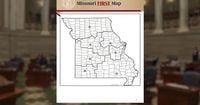Missouri is at the center of a political storm this September, as a new congressional map—designed to shift the state’s balance of power in Washington—faces mounting legal and grassroots opposition. The controversy, which has drawn in lawmakers, civil rights advocates, and everyday voters alike, is emblematic of a broader national trend: states across the country are weighing whether to redraw their House districts mid-decade, with the stakes set to reverberate through the 2026 midterm elections.
On September 15, 2025, Cole County Circuit Judge Christopher Limbaugh heard arguments in a high-profile lawsuit filed by the Missouri NAACP. The organization is seeking to invalidate the state’s newly passed congressional maps, which emerged from a special legislative session called by Governor Mike Kehoe. According to Nexstar Media, the session, lasting over ten days and ending on September 12, was convened specifically to address redistricting and other Republican priorities. The new map, which is expected to be signed into law by Kehoe in the coming days, is widely seen as a bid to flip the 5th Congressional District—currently held by Democrat Emanuel Cleaver—to Republican control.
The NAACP’s core argument is that Governor Kehoe lacked a compelling reason to call the special session in the first place. Sharon Jones, representing the NAACP, told the court, “We are in a position where new maps are going to have to be prepared, where legal challenges are already ongoing based on the legislation that passed. The harms, because of what we believe to be an improperly called extraordinary session, continue to march, and that’s why we’re still seeking the preliminary injunction and the temporary restraining order.”
But the state’s legal team, led by Solicitor General Louis Capozzi, countered that the lawsuit should be dismissed as moot, since the legislative session has already concluded. Capozzi argued that the Missouri Constitution grants the governor broad discretion to call lawmakers into session on “extraordinary occasions,” and that the courts have no precedent to second-guess such a political decision. “Plaintiffs want this court to second guess the governor on what constitutes an extraordinary occasion,” Capozzi said. “There’s no precedent to guide the court on that open-ended inquiry, no cases at all. It’s an inherently political and policy focused decision, and without any precedent to guide the court, the court should not start down that path.”
The stakes are high. Unless a court or a successful referendum intervenes, the new maps will take effect on December 11, 2025, and be used for the pivotal 2026 elections. The redistricting effort is part of a larger push by national Republican leaders—and, according to Nexstar Media, the White House itself—to encourage red states to redraw their congressional lines before the midterms. Missouri is now the third state to undertake such a move, with Ohio and Indiana also considering mid-decade redistricting. Meanwhile, blue states like Maryland and Illinois are weighing similar strategies to blunt potential Republican gains, reflecting a nationwide arms race over the House map.
The legal battle in Missouri is far from the only challenge facing the new congressional map. Two additional lawsuits have been filed since the special session adjourned, both questioning the constitutionality of revising district lines between federal censuses. One suit, filed in Jackson County, alleges that the new map divides a single Kansas City precinct between two districts, creating a map that is “malapportioned and/or noncontiguous.” Another, filed in Cole County, challenges the legislature’s authority to act outside the usual post-census redistricting window. As Capozzi noted in a court filing, “Nothing prohibits the General Assembly from adopting a new federal congressional map mid-decade. The Missouri Constitution is simply silent on that question. And where the Missouri Constitution is silent on a challenged legislative power, the General Assembly has the discretion to act.”
Grassroots opposition is also mounting. People Not Politicians Missouri, a nonpartisan coalition of civic leaders and legal experts, is working feverishly to put the new congressional map before voters for approval. The group filed a referendum petition with the Missouri Secretary of State’s office on September 12, giving them 90 days to collect at least 107,000 signatures from six of the state’s eight congressional districts. If they succeed, the map will be frozen from taking effect until voters have their say, likely in the November 2026 general election—unless a special election is called sooner.
At a virtual news conference, Richard von Glahn, a spokesperson for People Not Politicians Missouri, expressed confidence in the group’s ability to meet the signature threshold. “We’ve had 800 people sign up to volunteer to circulate petitions since the legislature adjourned on Friday,” von Glahn said. “They come from every corner in the state. I am confident that we are going to gather signatures from every single county in the state.” He emphasized the importance of the referendum process, noting, “Missourians should pick our elected officials. Elected officials shouldn’t pick who they wish to represent in Missouri. This is simply about how democracy should work, and that people should be at the center of our democracy, not politicians.”
The process, as explained by Tori Schafer of the American Civil Liberties Union of Missouri, is designed to be robust. “On the abortion campaign, in less than three months, we collected 380,000 signatures,” Schafer recounted, highlighting the state’s recent experience with high-profile ballot initiatives. Once People Not Politicians Missouri submits enough signatures, the law stipulates that House Bill 1—the legislation containing the new map—will be paused and cannot go into effect until the signatures are validated and voters have the opportunity to weigh in.
While the legal and political wrangling continues in Missouri, the state’s situation is being watched closely by lawmakers and strategists nationwide. Other states are at different stages in the redistricting process. According to Nexstar Media, Ohio legislators are under a tight deadline to approve a new map, with the process shifting between the state legislature and the Ohio Redistricting Commission depending on the level of bipartisan support. Indiana Republicans are debating whether to redraw their map as well, amid lobbying from national GOP leaders and the White House. Meanwhile, Maryland Democrats are exploring options to pick up a seat, Florida Republicans are forming panels to consider changes, and Illinois Democrats remain open to redrawing their own map, despite already holding a 14-3 advantage in their House delegation.
In Nebraska and Kansas, partisan calculations and legislative math are dictating the pace of redistricting discussions. Nebraska Republicans are considering whether they have enough votes to redraw the map and keep the state’s congressional delegation entirely in GOP hands, while Kansas Republicans are weighing another attempt to weaken Democratic Rep. Sharice Davids’s hold on the 3rd District, following a contentious battle over the map ahead of the 2022 election.
Back in Missouri, the coming weeks will be decisive. Judge Limbaugh has not indicated when he will rule on the NAACP’s lawsuit, and the outcome of the People Not Politicians Missouri referendum drive could fundamentally reshape the state’s political landscape. What’s clear is that Missouri’s redistricting fight is more than a local dispute—it’s a microcosm of the fierce, high-stakes battle for control of Congress playing out across the U.S., one signature, court filing, and legislative vote at a time.




